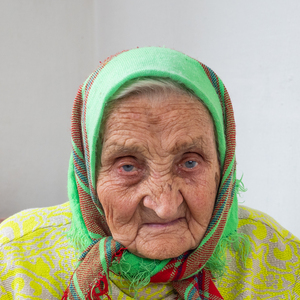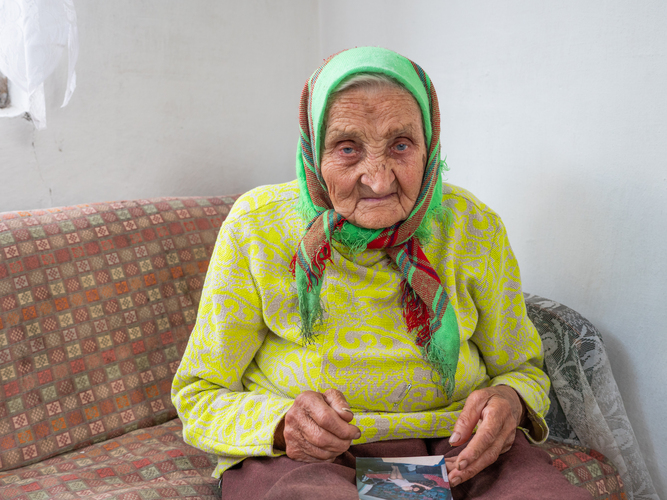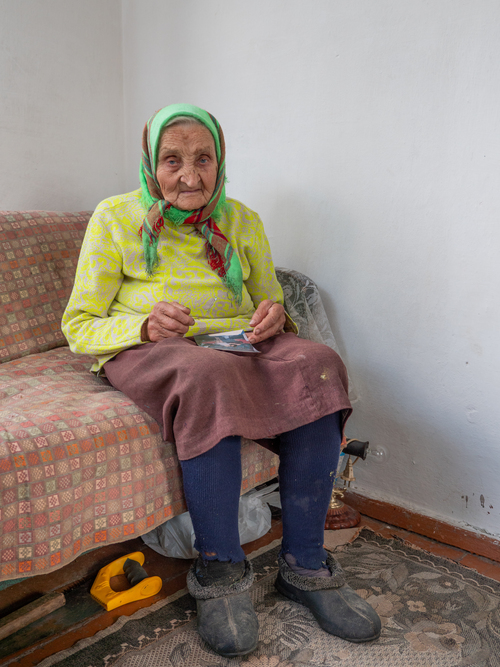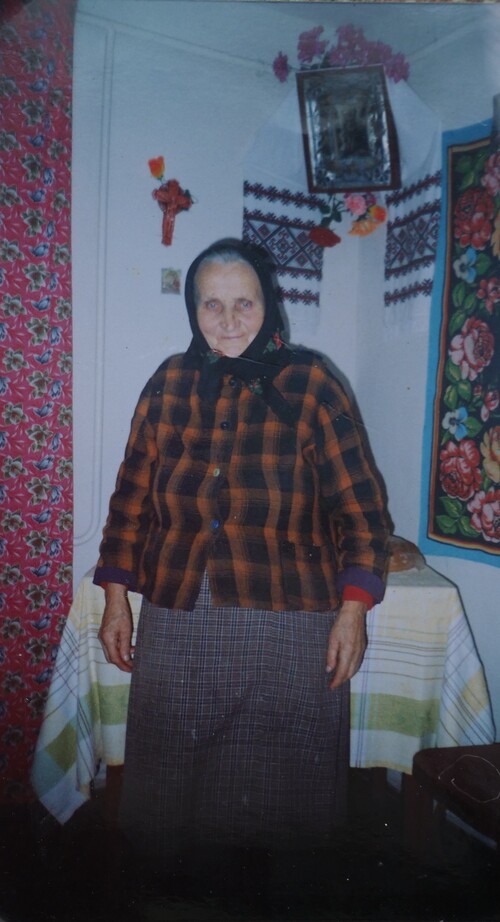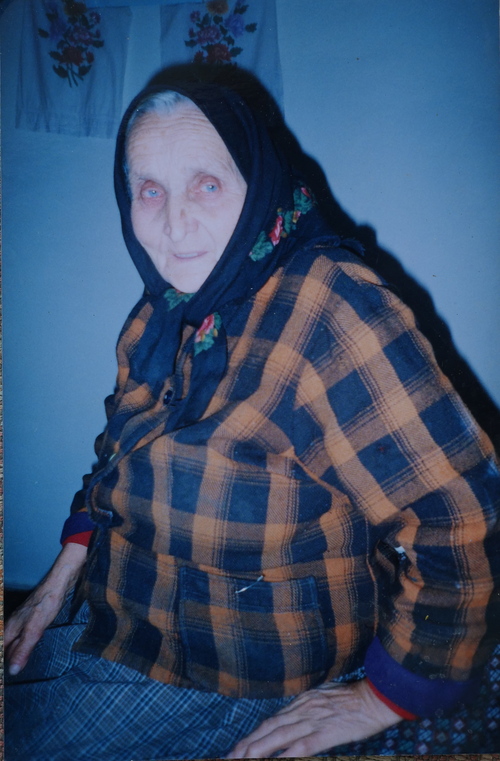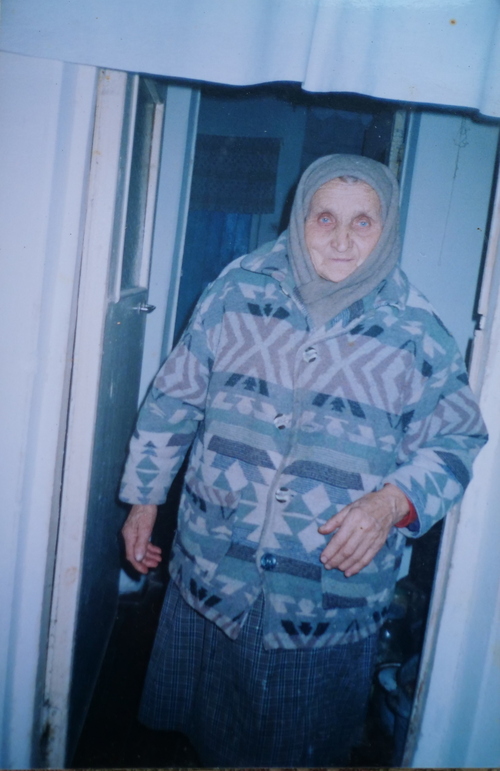Anastasia Antonivna Artemchuck (née Lahovska) was born on March 1, 1927, in the village of Vershnytsia (Narodytsky District of Zhytomy Oblast). She had a sister, Olha, and three brothers. Her father died when she was three, and her mother, Maria Lahovska, worked on a local collective farm. As a child, she survived the Holodomor of 1932-1933: “There were great difficulties. A lot of people died in the forest, and just on the road. People died everywhere”. Her family attributed their survival to the fact that they had a cow, which her mother could exchange for bread. Anastasia’s schooling was rudimentary, and she had to walk ten kilometres roundtrip to school. Before the war, she worked on the family farm, grazing a cow, and helping her mother collect flax.
When the German-Soviet war broke out, Anastasia was working, and her eldest brother Oleksandr was conscripted into the Red Army and died in the fighting. Under Nazi occupation, Anastasia’s mother fell ill, and the cow was confiscated. Anastasia attempted to avoid being mobilised for forced labour. Despite her best efforts, she was detained on May 25, 1942 – at the time, she was not yet fifteen years old. She was scarcely given time to pack and did not manage to take anything with her except food. She was taken to Germany with five older girls in freight cars.
Anastasia arrived in the city Frankfurt an der Oder. It was there that she was ordered to sew a patch reading “OST” (“east”) to her clothes, like the other forced labourers from Eastern Europe. She was interned in a barrack in a local village and forced to perform agricultural labour, weeding beets. Less than a month later, Anastasia tried to escape. For three days, she wandered among the rye crops. With the use of a dog, the authorities tracked her down; she was beaten and returned to her place of work. Following this incident, Anastasia and five other forced labourers were taken to the town of Landsberg an der Warthe (today Gozów Wielkopolski, Poland): “We were sorted there again. They took me first. I was screaming, and I was trying to do something not to let them take me away. I did not know where they could take me alone. I didn’t know the language; I didn’t understand anything.”
That is how she got assigned to the farm of the Branz family. It was run by a married couple with two sons – the elder was deceased prior to Anastasia’s arrival. The younger son was soon mobilised to the German army and died in active service a year later. Additionally, a German maid and a Polish forced labourer also lived on the farm. Anastasia noted that the latter held a higher status than her own: “I know he went home from time to time. His wife with two children came to visit him”. Anastasia shared a room with a German maid and all the workers ate together. She recalls she had to work hard. Her working day started at 3 AM by milking the farm’s twelve cows, digging potatoes, sorting, and digging beets.
Anastasia wrote letters home but hardly communicated with other forced labourers in the area - there simply was not enough time for that. She remembers that across the river from her, there were three forced labourers from the Mykolaiv region - cousins. One of them, Maria, committed suicide.
She witnessed the bombing of Landsberg an der Warthe, but it was calmer in her rural area. Anastasia remembers the arrival of Red Army soldiers; they entered the house and did not touch them but took the meat from the smokehouse. She remained on the farm for a month afterward, before starting out on her journey home. Through one Red Army soldier, she was able to send a letter to her relatives about her return. Her journey home was a long and perilous one due to constant bombing. She made her way through Poland, Belarus, and Ukraine, where she finally reached her native village: “I went into the house. I heard my mother praying to God, saying ‘Where is my daughter? May the Lord protect her and warn her, so the Lord returns her home’. I shouted: ‘Mom!’ That’s how I got home”.
After her return, Anastasia was subject to a Soviet interrogation in order to assess her political reliability: “They asked me: “What were you doing there? How did they feed you? Did they torture you or not?” A Soviet police officer also visited her several times to make sure she had not run away. After the war, Anastasia went to work on a local collective farm. She was employed there for a total of 36 years.
Following the Chernobyl disaster in 1986, Anastasia’s village became part of the exclusion zone. In 1992, its residents, including Anastasia and her family, were resettled to the village of Ozadivka in the Berdychiv District of Zhytomyr Oblast. She continues to live there today. As the full-scale Russian-Ukrainian war began, Anastasia’s granddaughter and great-grandchildren were living in Narodichy, which suffered Russian attacks and destruction; Russian troops occupied some of the neighbouring villages. Her granddaughter was forced to leave the country with her children.
Written by Barbara (Maastricht), HeeJin (Seoul), Sabine (Göttingen)
